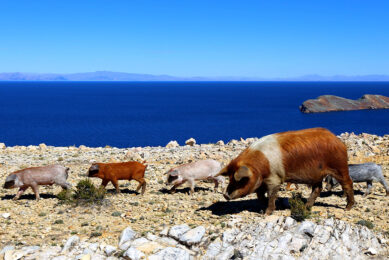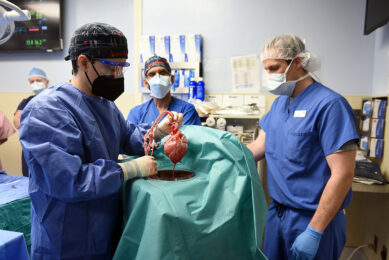Fusarium threat to Canadian pig producers
Swine producers in the Canadian province of Manitoba are being advised to exercise additional vigilance this year to avoid the potential consequences of feeding mycotoxin infected feed grains.
“A lot of the wheat crops are starting to show a lot of fusarium mainly due to the moist conditions we had at flowering,†observes Manitoba Agriculture Food and Rural Initiatives (MAFRI) farm production advisor for southwestern Manitoba Lionel Kaskiw.
Fusarium contaminated grain is of particular concern to swine producers. Fusarium graminearum, one of the species common in Manitoba, produces a number of mycotoxins. Deoxynivalenon, or DON, when included in swine rations, tends to cause feed refusal resulting in slower growth.
When eaten by pregnant gilts or sows, reproductive performance can be affected. The mycotoxin, Zearalenone (ZEA) is responsible for a range of breeding and reproductive problems including infertility or abortion.
The presence of fusarium in a field doesn’t necessarily mean the grain will become contaminated by mycotoxins or even that yields will be wiped out.
MAFRI specialists recommend mitigating the inclusion of mycotoxins in swine rations any way possible, including sourcing non contaminated grain or grains with very low levels of contamination. Also encouraged is dilution, mixing contaminated grains with clean grains.
Related Website
• MAFRI
Subscribe here to the Pig Progress newsletter
Fusarium contaminated grain is of particular concern to swine producers. Fusarium graminearum, one of the species common in Manitoba, produces a number of mycotoxins. Deoxynivalenon, or DON, when included in swine rations, tends to cause feed refusal resulting in slower growth.
When eaten by pregnant gilts or sows, reproductive performance can be affected. The mycotoxin, Zearalenone (ZEA) is responsible for a range of breeding and reproductive problems including infertility or abortion.
The presence of fusarium in a field doesn’t necessarily mean the grain will become contaminated by mycotoxins or even that yields will be wiped out.
MAFRI specialists recommend mitigating the inclusion of mycotoxins in swine rations any way possible, including sourcing non contaminated grain or grains with very low levels of contamination. Also encouraged is dilution, mixing contaminated grains with clean grains.
Related Website
• MAFRI
Subscribe here to the Pig Progress newsletter











